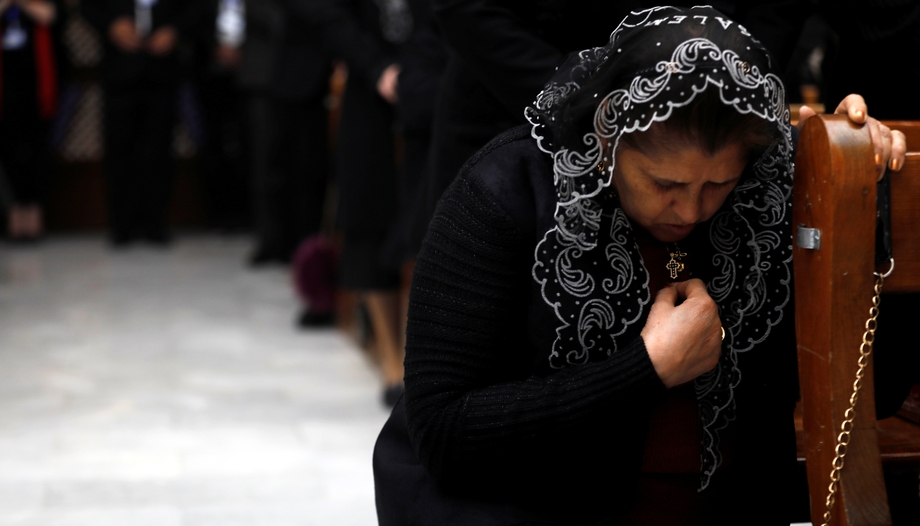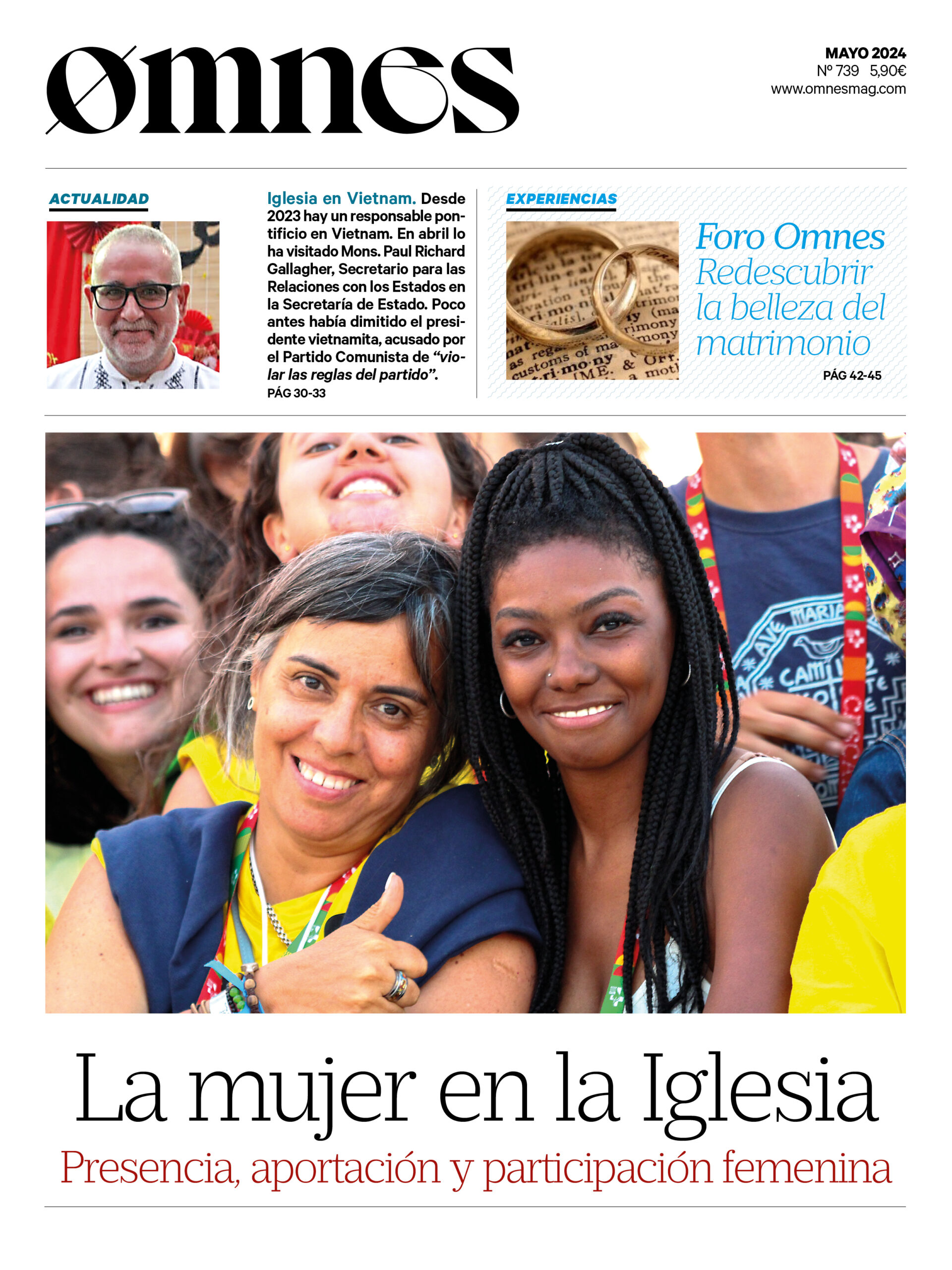









In the previous article on Iraq, we reported that in the country Islam is the religion of 95-98 % of the population, 60 % Shia and 40 % Sunni approximately (on the differences between Shia and Sunni we refer to our article on Iran). Non-Islamic minorities account for less than 2 %, in particular Christians, Jews, Mandaeansand Yazidis.
However, until 2003, Iraq was home to one of the largest Christian minorities in the Middle East, with 1.5 million believers: they were 6 % of the population (12 % in 1947), but today less than 200,000 remain.
Christianity in Iraq
Christianity has been present in Iraq for millennia (also here, as in Iran, longer than the current state religion, Islam), and with a very rich tradition.
Traditionally, St. Thomas the Apostle is considered the evangelizer of Mesopotamia and Persia, followed in the mission by Addai (Thaddeus), one of the seventy disciples of Jesus and first bishop of Edessa, and his disciple Mari (famous is the Anaphora of Addai and Mari, considered one of the oldest Eucharistic formulas), already in the first century. The Church of the East, also known as Church of Persia, Assyrian Church or Nestorian Church, with its own specific identity, was born however between the third and fourth centuries, when it separated from Western Christianity at the Council of Ephesus (431), when the Assyrian and Persian bishops did not accept the condemnation of Bishop Nestorius and his ideas, and later with the Council of Chalcedon (451). This led to a split within the Eastern Church, with Chalcedonian and non-Chalcedonian ecclesiastical hierarchies at odds.
The Assyrian Church, whose center of gravity was therefore in Mesopotamia and Persia, was characterized by the Antiochene tradition, represented above all by Theodore of Mopsuestia, friend and confrere in the same monastic community as John Chrysostom in Antioch, and the liturgy proper to the early Church, very close therefore to the Jewish synagogal. Not being influenced by the Hellenistic mentality and philosophy, not even by architecture, his theology is very spiritual and symbolic, lacking almost completely in abstract conceptual tools, to the point that in Syriac we do not have systematic works of theology, but allegorical accounts, homilies in verse that develop biblical symbolism, writings that relate the ascetic and mystical experiences of their respective authors, such as Aphraates the Wise or Ephrem the Syrian, considered Fathers of this Church on a par with Narses, Theodore himself, Abraham of Kashkar and others.
Assyrian Christianity had an enormous fecundity in the first millennium. Its missionaries, in fact, long before Matteo Ricci and other Western evangelizers, reached as far as China (as attested by the Nestorian stele, erected in 781 in Xi'an, central China, to celebrate 150 years of Assyrian Christian presence in the country), Afghanistan and the Himalayas, along the Silk Road routes.
Assyrian Christians
When we speak of Assyrian Christians, we are not referring to the ancient Mesopotamian people, but to an ethno-religious group that speaks Syriac (a modern variant of ancient Aramaic) and professes Syriac Christianity (or Assyrian, synonymous in this case with "Syriac" and not Assyrian-Babylonian). Today, the Assyrians number around 3.5 million, settled mainly in Iraq (300,000, mainly between Baghdad, Mosul and the Nineveh plain), Syria (180,000), the United States and Europe. They were also numerous in southern Turkey, but were exterminated or exiled in the course of the Assyrian Genocide (contemporary, but less known than the Armenian) which involved the systematic massacre of between 275 and 750,000 Assyrian Christians, also obviously denied by Turkey but recognized internationally and by historians worthy of the name.
The cradle of this ethnic and religious group is the city of Mosul (ancient Nineveh, on the banks of the Tigris), along with the Nineveh Plain (northeast of the latter city), an area that is part of the governorate of Nineveh but whose inhabitants claim an autonomous Assyrian province. Between the city of Mosul and the Nineveh Plain (also inhabited by Kurds, Turkmen, Arabs, Yazidis and other ethno-religious groups) lie some of the most important holy sites of Syriac and world Christianity, including the 4th century Syriac Catholic monastery of Mar Benham, near the Christian city of Qaraqosh (Bakhdida, in Aramaic, 50.000 inhabitants before the proclamation of ISIS and 35,000 today), the church of Al-Tahira (Immaculate, in Arabic, the oldest church in Mosul, from the 7th century), the monasteries of Mar Mattai and Rabban Ormisda (among the oldest Christian monasteries in the world).
The language they speak is an evolution of ancient Aramaic, in one of its eastern variants now called suroyo or turoyo, which is still very widespread among the population.
Before the Arab-Islamic conquest, Christians were a majority in Iraq, but their presence, although still fundamental at the cultural and economic level, as in other countries of the Middle East, is at constant risk, especially after the fall of Saddam Hussein. According to Cardinal Louis Raphaël I Sako, Patriarch of the Chaldean Church of Iraq but a point of reference for all Iraqi Christian communities, now increasingly united in what Pope Francis calls "ecumenism of blood", after the overthrow of the dictator, 1,200 Christians were killed (including several priests and deacons and Archbishop Paulos Faraj Rahho), 62 churches were severely damaged and more than 100,000 people became refugees, deprived of all their possessions.
The persecution, already fierce due to Al Qaeda attacks (dozens killed in several Baghdad churches, the murder of priest Ragheed Ganni in 2007, of Bishop Sahho in 2008, to name but a few), intensified in 2014, when ISIS jihadists invaded Mosul and occupied the Nineveh Plain for about a year, turning against the minorities present, in particular Christians and Yazidis.
A Aid to the Church in Need report highlights how, even with a partial return of refugees to the various villages and towns between Mosul and the Nineveh plain following the defeat of the Caliphate (between 20 % and 70 % depending on location and conditions), the situation of Christians (and other groups) in the country remains dramatic and the exodus continues.
At present, Syriac Christianity in Iraq is present under different denominations. In fact, since the 16th century, a considerable part of the Syriac Orthodox Church and the Eastern Syriac Church have returned to communion with Rome, formally accepting the Council of Chalcedon and its conclusions on Christological questions, while safeguarding their own spiritual traditions, theological and liturgical traditions (like other Eastern Churches, they define themselves as Sui Iuris Churches), and are respectively the Syro-Catholic Church (of the Western Syriac rite, like the Syriac Orthodox Church) and the Chaldean Church, the majority in the country (of the Eastern Syriac rite, like the Syriac, or Assyrian, Church of the East).
The Yazidis
In addition to Christians and Mandaeans, another Iraqi minority we hear a lot about lately are the Yazidis.
They are a Kurdish-speaking population professing Yazidism, a syncretic religion. They are mainly concentrated in the Sinjar region, about 160 km east of Mosul.
Their belief in a supreme and ineffable God, who relates to the world through his seven creator angels or avatars, whose first in dignity is Melek Ta'ùs (angel of the peacock or fallen angel), has created around them the denomination of worshipers of the devil (Satan), since, according to some oriental stories, the tempter of Eve assumed the figure of a peacock.
They are called Yazidis because this Peacock angel is said to have split into a triad and manifested over time in the form (always avatars) of a number of pivotal figures for this people, including Yazid (the Umayyad caliph Yazid ibn Mu‛awiyah) and Sheikh Adi ibn Musafir (a great Muslim Sufi of the 12th century). They believe, in a curious mixture of Gnosticism, Christianity and Islam, in metempsychosis (reincarnation, a Gnostic element), immortality of the soul, paradise for the righteous and punishment for sinners, consisting of transmigration into lower beings until the day of reckoning.
Their cults are also syncretic, mixing Christian elements (baptism, forms of communion), probably due to contacts with Christian communities, especially Nestorian (which also strongly influenced Islam and its rites), Gnostic and Muslim (circumcision, fasting, pilgrimage, although for the Yazidis the pilgrimage takes place annually to the shrine of Sheikh Adi in Lalish, in northern Iraqi Kurdistan).
The Gnostic origin is equally evident in the communitarian order, of a theocratic nature and according to the level of knowledge of the mysteries, between laymen (defined as "aspirants") and clerics (divided into various categories).
The Yazidis were undoubtedly the most persecuted minority under the ISIS caliphate, as they were considered, unlike Christians, mere pagans, or worse, devil worshippers, and therefore liable to be persecuted to death unless they converted to Islam.
It is estimated (the figures come from Marzio Babille, UNICEF spokesman) that in the period of occupation of northern Iraq by Abu Bakr Al-Baghadi's jihadists, at least 1,582 young Yazidi girls between 12 and 25 years of age were kidnapped (if not twice as many) to be raped and used as sex slaves, passed from one guerrilla to another, and then often become pregnant, even more than Christian girls.
The horrors of their stories shocked and outraged the whole world at the time, which however no longer seems interested in the fate of the survivors of this barbarism in a country increasingly abandoned to itself.
Writer, historian and expert on Middle Eastern history, politics and culture.












